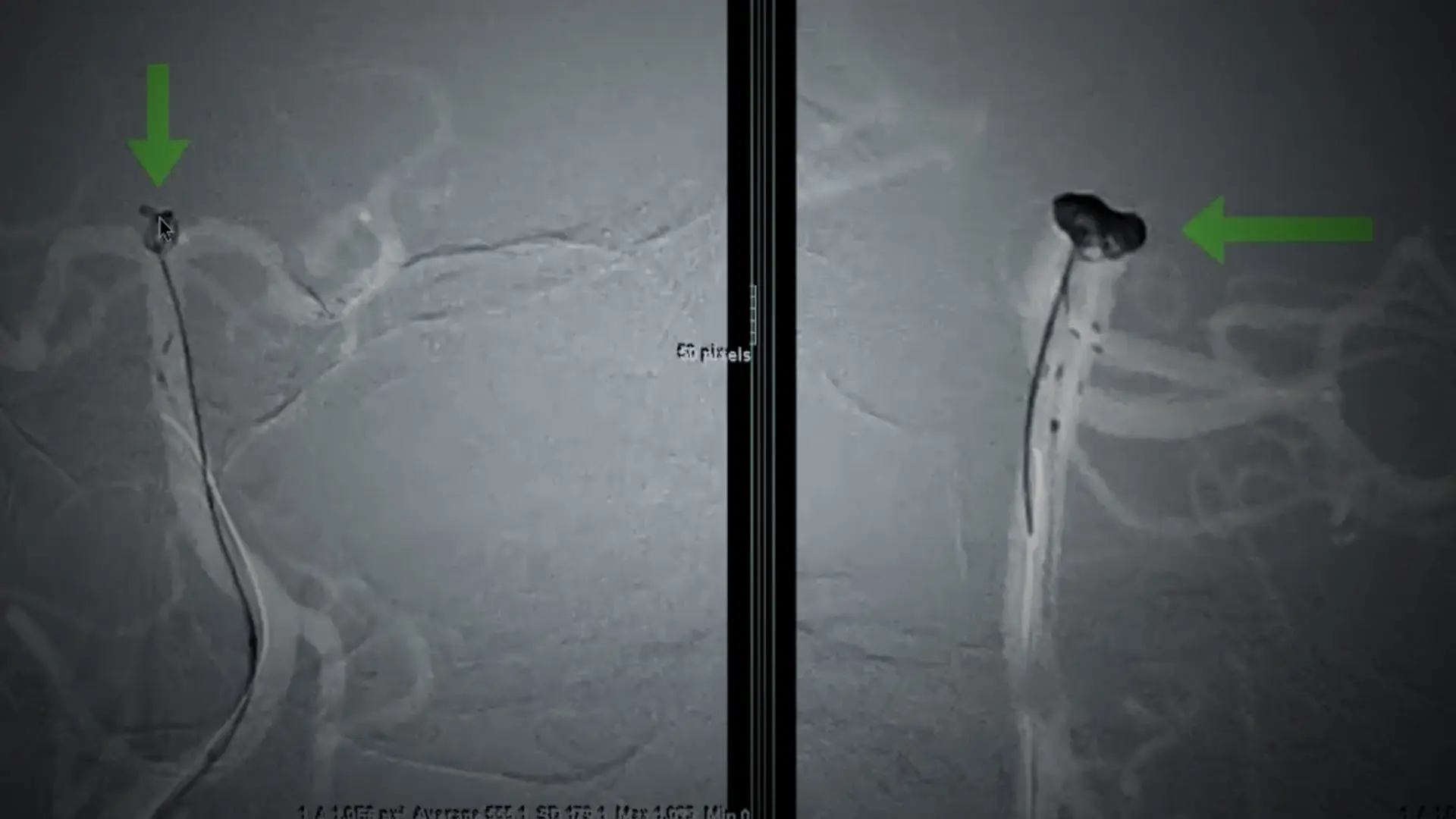“In 2013, we had limited tools to help treat patients with challenging brain aneurysms and other complex brain vascular abnormalities,” says J Mocco, MD, MS, a cerebrovascular and endovascular neurosurgeon who serves as The Kalmon D. Post, MD, Professor and Senior Mount Sinai Health System Vice Chair in the Department of Neurosurgery, and Director of the Cerebrovascular Center.
“In 2024, we did an evaluation of her aneurysm with an MRA, and it was noted that the size of her aneurysm was larger than previously considered. We determined that its size put it in a higher risk category for potential rupture, particularly given its location at the basilar tip,” says Dr. Mocco.
“On discussion with a multidisciplinary cerebrovascular conference with expert neurologists, radiologists, and neurosurgeons, and with the development of more navigable stents that are able to be brought through smaller catheters—and softer, more flexible coils that can more easily move along an irregular aneurysm shape such as this—we all felt this was a reasonable aneurysm to treat with a reasonable risk of treatment compared to its natural history.
“The initial result showed excellent occlusion and no signs of any bleeding or clots forming, with excellent coil and stent placement,” says Dr. Mocco. “Three months later, it showed complete obliteration of the aneurysm.”
Watch a video presentation of the case, narrated by Dr. Mocco, below.
In 2013, a 2.4 mm aneurysm in a female patient was deemed reasonable to observe. By 2024, advances in endovascular techniques and technology provided an opportunity to cure her aneurysm.
